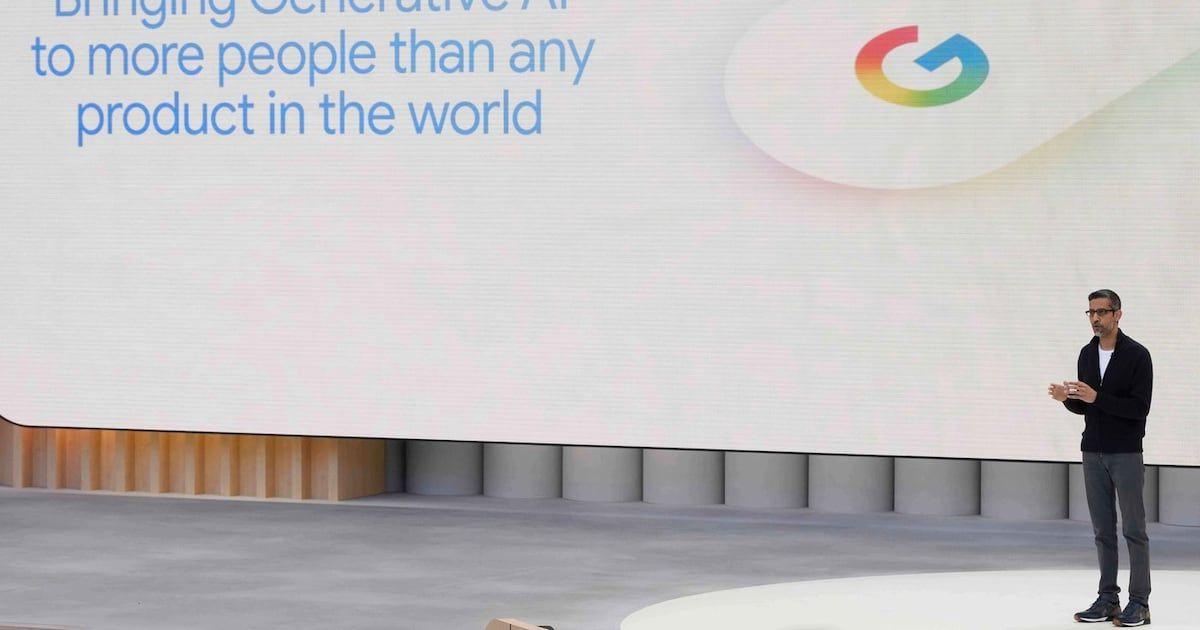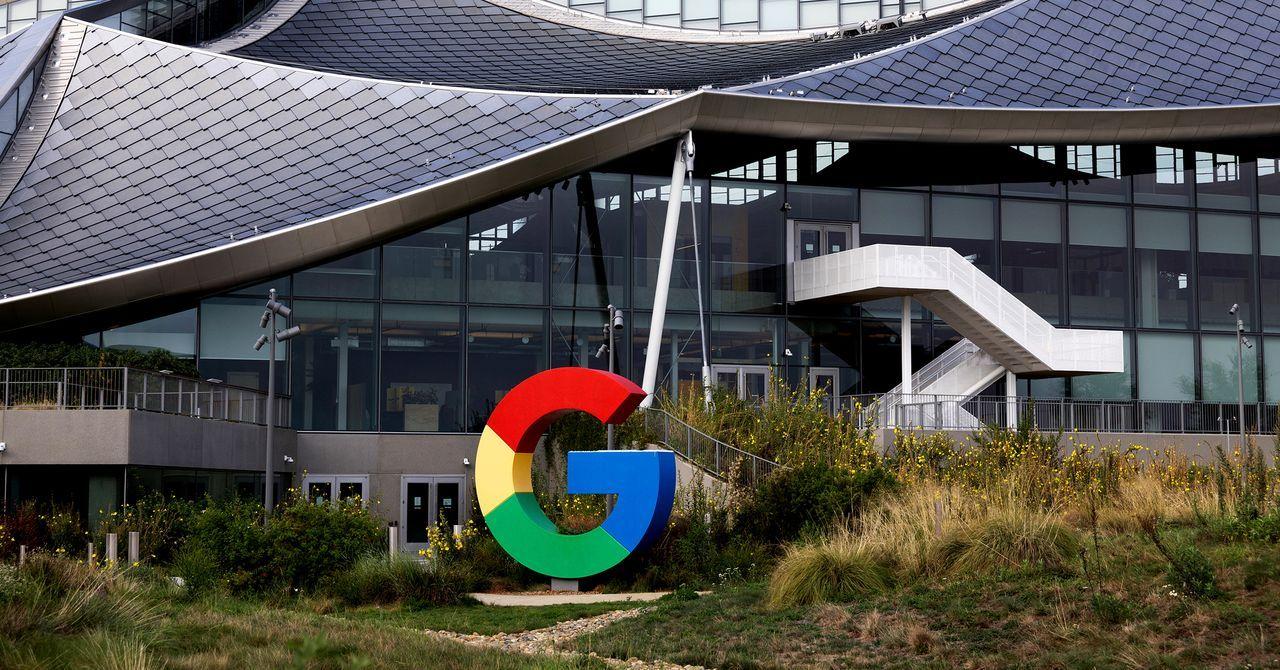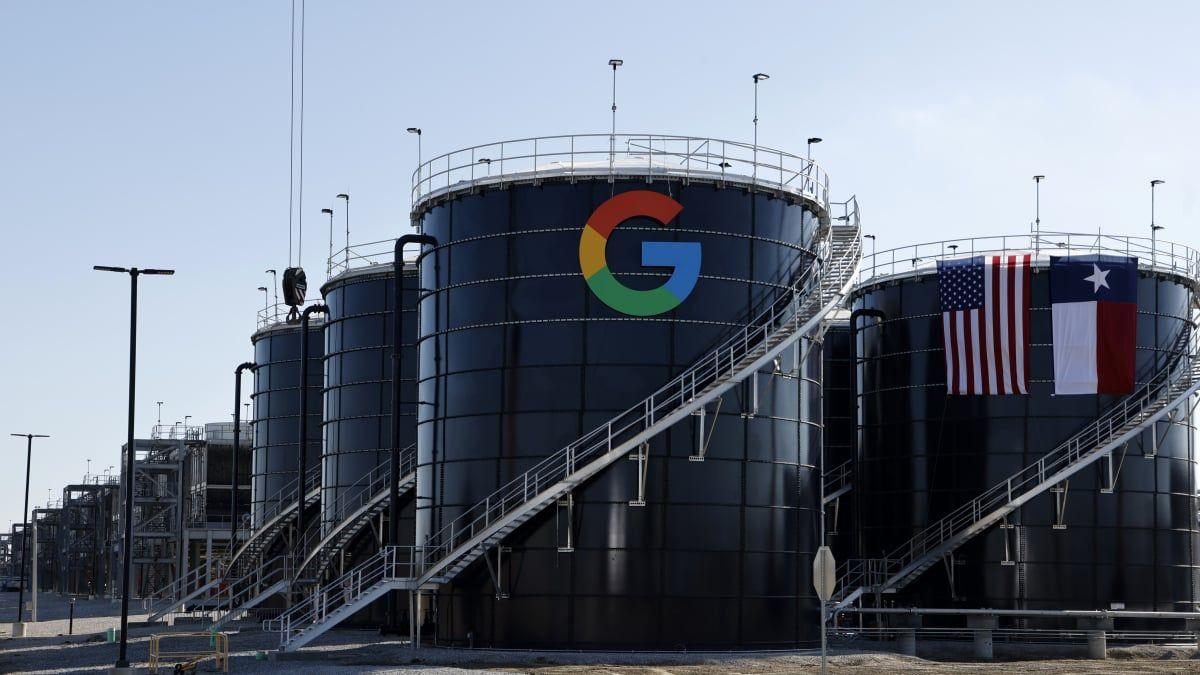Tech Giants Turn to Bond Markets as AI Infrastructure Spending Triggers Market Concerns
4 Sources
4 Sources
[1]
AI capex spending fears spread to the bond market following tech jitters
Return on investment in AI capex is a key concern for fund managers, who say previously asset-lite tech firms increasingly resemble manufacturers and infrastructure companies.U.S. tech giants' push to finance a massive artificial intelligence infrastructure boom is testing bond market appetite as investor concerns over capex spending and valuations grow. Major U.S. tech names are tapping the bond markets to fund massive infrastructure expansions, with Meta , Alphabet and Oracle all issuing public debt in October. But in a note this week, London-listed Man Group -- the world's largest publicly traded hedge fund and private assets group -- warned that a "glut" of lower quality AI names may prove "too much for markets to stomach" amid the rush to scale up tech infrastructure. "Unlike equity investors, we're less concerned about making bets on AI's future or Big Tech's success and are focused on downside risks," Man Group said in the market commentary. "To us the capex rollout plans are not as gold-plated as the shiny prospectuses might suggest." Man Group said hyperscalers have quadrupled their capex spend in recent years to almost $400 billion annually, with expectations of $3 trillion over the next five years. Meta raised $30 billion in October -- the largest corporate bond issuance in more than two years -- which drew record-breaking demand, with an oversubscribed order book of $125 billion. Alphabet followed with a $25 billion debt issue, while Oracle issued about $18 billion at the end of the third quarter. Funding gap "While these companies are formidably well capitalized and exceptionally profitable ... there remains a significant funding gap," wrote Man Group's Jon Lahraoui, director, discretionary credit, and Hugo Richardson, associate director, discretionary investment specialist. Private markets have been filling part of that gap. Blue Owl was involved in a $27 billion deal with Meta and Pimco in September, while CoreWeave has tapped private credit financing from Blackstone and major investment banks' private credit teams, Man Group said. Read more Investors hope these three trades will weather a tech stock downturn AI valuation fears grip global investors as tech bubble concerns grow U.S. hyperscalers face a $1.5 trillion AI infrastructure spending gap, according to Morgan Stanley estimates, a sum which Man Group said cannot be met the private credit space alone. Enthusiasm is now giving way to jitters, reflected in the recent tech stock wobble . Oracle's 30-year bond recently fell amid reports it is planning further debt issuance, while the price of 5-year credit default swaps -- which provide a protection hedge against a company default -- rose. Jason Thomas, head of global research and investment strategy at Carlyle , said investor excitement has been tempered by valuation and concentration concerns, particularly in U.S. markets. A change in strategy Speaking to CNBC's Julianna Tatelbaum on Wednesday, Thomas highlighted a "subtle change of strategy" among U.S. hyperscalers, who have shifted from being asset-lite companies trading at high price-to-book ratios and defined by intangible assets such as proprietary technology and digital platforms to something more closely resembling manufacturing companies. Thomas said 70% of their cash flow is now consumed by capital spending, with much of it being poured into property assets such as data centers. "Should these companies continue to trade at price-to-book ratios, that are now on average about 11 times when they're not quite the virtual businesses they once were? They now in some cases look more like a manufacturing or infrastructure company," Thomas said. Bank of America 's latest Global Fund Managers survey highlighted fears of "overinvestment " by AI hyperscalers amid broader tech bubble concerns. Johanna Kyrklund, group chief investment officer at Schroders , said there is "no question" there are more jitters over AI-related spending and how capex is financed. "It is something people are worried about, and also, crucially, what the return on investment will be," Kyrklund said at a Schroders investment roundtable on Tuesday. Kyrklund pinpointed the returns on investment in AI capex as the key market theme that is keeping her up at night heading into 2026. She described the recent sell-off in AI-related stocks as "normal market volatility" and "not a correction" -- but conceded that concerns are rising. "I think you do need to own these stocks backed by deep fundamental analysis, as opposed to just [owning them] because they happen to be in the index." Sector divergence Andrew Sheets, global head of corporate credit research at Morgan Stanley, expects investment-grade spreads to widen, but he does not anticipate a recession. Sheets told CNBC's "Squawk Box Europe" on Tuesday that while the enormous tech spend will continue, many of the tech behemoths boast "some of the strongest balance sheets on the planet." "If you'd want any sector to do a lot of borrowing, you'd want this sector to do it," Sheets said. But he acknowledged there is divergence between "stronger and weaker players." Market concerns of an overbuild may be premature, according to Sheets. "These companies see AI investment as absolutely essential to their long-term success ... these data centers are enormously complex, expensive projects that take a long time to get up to speed," he said. "So it's very accurate to say that the history of large capex cycles in markets has often been troubled. But it's also the case that those troubles usually happen because you build too much, and there's excess capacity. We're just not seeing that yet in data centers. There's still a shortage of compute. Eventually we think [this] will become more of a credit concern but we're not there yet."
[2]
More Big Tech company debt 'would increase the macro risks associated with the AI build-out,' Goldman Sachs warns | Fortune
The increase in debt-funded capital expenditure (capex) by the big "hyperscaler" tech companies is adding to the level of risk in the AI economy, according to Goldman Sachs. Those companies -- Amazon, Google, Meta, Microsoft, and Oracle specifically -- have taken on $121 billion in debt, year-to-date, up from $28 billion on average over the previous five years. "While the degree of public company leverage remains small, a continued shift toward debt financing would increase the macro risks associated with the AI build-out," Goldman analyst Ryan Hammond and his team wrote in a note seen by Fortune. The amount of extra debt from big tech companies being traded in the private credit markets is already having an effect. "Excluding [Oracle], the large public hyperscalers could theoretically increase their debt by $700 billion," Hammond et al wrote. Guy LeBas, chief fixed income strategist at Janney Capital Management, a wealth manager that advises on about $170 billion in client assets, agrees. "The growth of the U.S. corporate bond markets net new issuance [of debt] is about $600-$800 billion per year. And hyperscaler issuance could increase that number by 20%," he told Fortune. The extra supply of corporate debt is making investors demand greater yields from that debt, above the rate of treasuries, to account for the extra risk, LeBas said. "Even as this trend has taken hold, the spread of the investment grade bond markets over treasuries, in aggregate, has gone from about 70 basis points to about 85 basis points today. I would anticipate that if the hyperscaler debt issuance theme continues, we could see spreads widen as much as 95 basis points, which is material when we're talking about a relatively low volatility market," he said. All this extra debt has analysts trying to figure out where that extra risk will play out. They all agree that the chances of one of the big tech companies breaching a debt covenant is extremely small. They have masses of cash on their balance sheets. But smaller companies are also issuing private credit to service the AI economy, LeBas said. For instance, companies like data center real-estate investment trusts (REITs) are aggressively borrowing in some cases, he said. "I think that the biggest risks I see in the private credit lending market are often where private credit intersects with smaller participants in the AI data center expansion. For example, just a hypothetical, private credit loans that are backed by GPU [computer chip] purchases from a startup that is using those loans to purchase data center space in a multi-tenant data center, which may also be getting loans from said private credit entity, to fund the data center infrastructure," he said. Those loans tend to be taken on when the market is in a boom. The value of the underlying assets that back them -- computer chips have a useful life of only a few years before they are rendered obsolete by newer models -- will decline if there is a pullback in AI spending. "Those pro-cyclical lending experiences tend to be the ones that end in tears," LeBas said. The Goldman team was cautious in its language. "Negative share price reactions to capex surprises could force managements to reconsider the magnitude of capex growth going forward," they said.
[3]
Google owner Alphabet, Meta, Oracle, Amazon are selling bonds worth nearly $90 billion. What is going on with US Tech giants?
AI capital expenditure is projected to increase to $600 billion by 2027, up from over $200 billion in 2024 and just under $400 billion in 2025, and net debt issuance is expected to reach $100 billion in 2026. Amazon, Facebook, WhatsApp owner Meta, Google-parent Alphabet, Oracle are turning aggressively to the debt markets in their race to build AI-ready data centers, a shift for Silicon Valley firms that typically relied on cash to fund their investments. Since September, public bond issuance by four of the major cloud computing and AI platform companies known as "hyperscalers" has hit nearly $90 billion, with Google owner Alphabet selling $25 billion in bonds, Meta $30 billion, Oracle $18 billion, and Amazon, the most recent, $15 billion, according to Reuters calculations of publicly available data. Only Microsoft , the fifth one, has not tapped the debt market in recent weeks. Investors claimed that, so far, they are not overly concerned about the impact on stock valuations because of the recent fundraising, since these companies remain lightly leveraged relative to their scale. But the sudden pickup in public debt issuance has raised questions about the market's ability to absorb the surge in supply and is feeding into growing worries over AI-related spending that have helped trigger a sharp pullback in U.S. stocks this month after six months of gains. The S&P 500 is still up 11 per cent this year, with tech stocks among the main contributors to gains. AI Capital Expenditure AI capital expenditure is projected to increase to $600 billion by 2027, up from over $200 billion in 2024 and just under $400 billion in 2025, and net debt issuance is expected to reach $100 billion in 2026, Sage Advisory, an investment management firm, said in a recent note. While hyperscalers have been ramping up borrowing, Nvidia, a major supplier of computing power to them, has trimmed its long-term debt from $8.5 billion in January to $7.5 billion by the end of the third quarter. Credit ratings agency S&P Global Ratings last month revised its outlook on the company to "positive" from "stable," citing revenue growth and robust cash flow. "You have all these hyperscaler issuance coming out, and I think the market woke up to the fact that it's not going to be private credit markets that are going to fund AI, it's not going to be free cash flow. It's going to have to come from the public bond markets," said Brij Khurana, portfolio manager at Wellington Management Company. "You need capital to come from somewhere to finance this," he said. "What's happening is a recognition that you need money almost coming out of stocks into bonds," Brij Khurana said. Including a $27 billion financing deal Meta struck with Blue Owl Capital in October to fund its biggest data center project, hyperscaler debt issuance has jumped to over $120 billion this year from an average of $28 billion over the past five years, analysts at BofA Securities said in a recent note.Q1. Which companies are selling bonds? A1. Amazon, Facebook, WhatsApp owner Meta, Google-parent Alphabet, Oracle are selling bonds. Q2. What do we know about AI capital expenditure? A2. AI capital expenditure is projected to increase to $600 billion by 2027, up from over $200 billion in 2024 and just under $400 billion in 2025, and net debt issuance is expected to reach $100 billion in 2026, Sage Advisory, an investment management firm, said in a recent note. (You can now subscribe to our Economic Times WhatsApp channel)
[4]
Jitters over AI spending set to grow as U.S. tech giants flood bond market
NEW YORK -- Investors are growing uneasy that the rapid rise in public debt used to bankroll AI investments could strain the U.S. corporate bond market and eventually dampen the appeal of tech stocks, despite leverage across most major companies remaining low for now. Big tech firms are turning aggressively to the debt markets in their race to build AI-ready data centers, a shift for Silicon Valley firms that typically relied on cash to fund their investments. Since September, public bond issuance by four of the major cloud computing and AI platform companies known as "hyperscalers" has hit nearly US$90 billion, with Google owner Alphabet selling $25 billion in bonds, Meta $30 billion, Oracle $18 billion, and Amazon, the most recent, $15 billion, according to Reuters calculations of publicly available data. Only Microsoft, the fifth one, has not tapped the debt market in recent weeks. Investors say that, so far, they are not overly concerned about the impact on stock valuations because of the recent fundraising, since these companies remain lightly leveraged relative to their scale. But the sudden pickup in public debt issuance has raised questions about the market's ability to absorb the surge in supply and is feeding into growing worries over AI-related spending that have helped trigger a sharp pullback in U.S. stocks this month after six months of gains. The S&P 500 is still up 11 per cent this year, with tech stocks among the main contributors to gains. "You have all these hyperscaler issuance coming out, and I think the market woke up to the fact that it's not going to be private credit markets that are going to fund AI, it's not going to be free cash flow. It's going to have to come from the public bond markets," said Brij Khurana, portfolio manager at Wellington Management Company. "You need capital to come from somewhere to finance this," he said. "What's happening is a recognition that you need money almost coming out of stocks into bonds." Including a $27 billion financing deal Meta struck with Blue Owl Capital in October to fund its biggest data center project, hyperscaler debt issuance has jumped to over $120 billion this year from an average of $28 billion over the past five years, analysts at BofA Securities said in a recent note. Rising debt at tech companies adds a new layer of concern to a market that, despite being fueled by the promise of high AI returns, remains wary that the technology has yet to deliver the profits needed to justify such large capital spending. "There are doubts that have emerged in the last few weeks around the AI spend story that are related to ... the need for firms to be able to finance that, and that includes through debt finance," said Larry Hatheway, global investment strategist for Franklin Templeton Institute. AI capital expenditure is projected to increase to $600 billion by 2027, up from over $200 billion in 2024 and just under $400 billion in 2025, and net debt issuance is expected to reach $100 billion in 2026, Sage Advisory, an investment management firm, said in a recent note. While hyperscalers have been ramping up borrowing, Nvidia NVDA.O, a major supplier of computing power to them, has trimmed its long-term debt from $8.5 billion in January to $7.5 billion by the end of the third quarter. Credit ratings agency S&P Global Ratings last month revised its outlook on the company to "positive" from "stable," citing revenue growth and robust cash flow. Microsoft and Oracle declined to comment. An Amazon spokesperson said proceeds from its recent bond sale will fund business investments, future capex, and repay upcoming debt maturities, noting that such financing decisions are part of routine planning. Alphabet and Meta did not immediately comment. Demand for recent tech bond deals has been strong, but investors demanded sizeable new issue premiums to absorb some of the new securities. Alphabet and Meta paid about 10-15 basis points over the companies' existing debt with their most recent debt issues, said Janus Henderson in a note. While U.S. investment grade credit spreads - which indicate the premium highly rated companies pay over Treasuries to attract investor demand - remain historically low, they have ticked up in recent weeks, partly reflecting concerns over the new wave of bond supply hitting the markets. "For much of the year, credit spreads have been grinding tighter ... But the recent deluge of supply - particularly from tech - may have changed the game," said Janus Henderson. To be sure, the shift to debt is expected to remain a small portion of total AI spending by large tech companies, with UBS recently estimating that about 80-90 per cent of their planned capital expenditure still comes from cash flows. Sage Advisory's research said the top hyperscalers are expected to move from having more cash than debt to just modest levels of borrowing, still keeping leverage below 1×, meaning their total debt would be less than what they earn. "Supply bottlenecks or investor appetite are more likely to act as constraints on near-term capex than cash flows or balance sheet capacity," analysts at Goldman Sachs said in a note this week. Excluding Oracle, hyperscalers could absorb up to $700 billion in additional debt and still be viewed as safe, keeping leverage below that of the typical A+ rated firm, they said. "These companies still have very solid business lines that are just spinning off tons of cash," said Garrett Melson, portfolio strategist at Natixis Investment Managers Solutions.
Share
Share
Copy Link
Major U.S. tech companies have issued nearly $90 billion in bonds since September to fund AI data center expansion, marking a shift from traditional cash-based financing. This surge in debt issuance is raising concerns about market capacity and the sustainability of massive AI capital expenditure plans.
Tech Giants Embrace Debt Financing for AI Infrastructure
Major U.S. technology companies are fundamentally altering their financing strategies, turning aggressively to bond markets to fund massive artificial intelligence infrastructure buildouts. Since September, four major hyperscalers have issued nearly $90 billion in public debt, with Google parent Alphabet selling $25 billion in bonds, Meta raising $30 billion, Oracle issuing $18 billion, and Amazon most recently adding $15 billion
1
3
.
Source: BNN
This represents a dramatic departure from Silicon Valley's traditional approach of using cash reserves to fund investments. Including Meta's $27 billion private financing deal with Blue Owl Capital, hyperscaler debt issuance has surged to over $120 billion this year, compared to an average of just $28 billion over the previous five years
2
4
.Unprecedented Capital Expenditure Projections
The scale of planned AI infrastructure spending is staggering. AI capital expenditure is projected to increase from over $200 billion in 2024 to nearly $400 billion in 2025, ultimately reaching $600 billion by 2027
3
. Hyperscalers have quadrupled their capex spending in recent years to almost $400 billion annually, with expectations of $3 trillion over the next five years1
.
Source: Fortune
Morgan Stanley estimates that U.S. hyperscalers face a $1.5 trillion AI infrastructure spending gap that cannot be met by private credit markets alone
1
. This funding challenge is driving the shift toward public bond markets, as Wellington Management's Brij Khurana noted: "The market woke up to the fact that it's not going to be private credit markets that are going to fund AI, it's not going to be free cash flow. It's going to have to come from the public bond markets"4
.Market Concerns and Risk Assessment
The surge in tech debt issuance is raising significant concerns among investors and analysts. Goldman Sachs warned that "a continued shift toward debt financing would increase the macro risks associated with the AI build-out," noting that large public hyperscalers could theoretically increase their debt by $700 billion
2
.
Source: ET
Man Group, the world's largest publicly traded hedge fund, cautioned that a "glut" of lower quality AI names may prove "too much for markets to stomach." The firm expressed skepticism about capex rollout plans, stating they are "not as gold-plated as the shiny prospectuses might suggest"
1
.Related Stories
Transformation of Tech Business Models
The debt-fueled infrastructure expansion is fundamentally changing the nature of tech companies. Carlyle's Jason Thomas highlighted a "subtle change of strategy" among hyperscalers, who have shifted from being asset-lite companies to something more closely resembling manufacturing or infrastructure companies. Approximately 70% of their cash flow is now consumed by capital spending, much of it invested in physical assets like data centers
1
.This transformation raises questions about appropriate valuations, as Thomas noted: "Should these companies continue to trade at price-to-book ratios that are now on average about 11 times when they're not quite the virtual businesses they once were?"
1
.References
Summarized by
Navi
Related Stories
Big Tech Triples Down on AI Infrastructure Spending Despite Bubble Concerns
23 Oct 2025•Business and Economy

Private Credit Fuels AI Boom, Raising Concerns of Overheating and Bubble Risks
19 Aug 2025•Business and Economy

AMD CEO Lisa Su dismisses AI bubble fears as Goldman Sachs warns of datacenter investment risks
05 Dec 2025•Business and Economy

Recent Highlights
1
Google launches Gemini 3 Flash as default AI model, delivering speed with Pro-grade reasoning
Technology

2
OpenAI launches GPT Image 1.5 as AI image generator war with Google intensifies
Technology

3
OpenAI launches ChatGPT app store, opening doors for third-party developers to build AI-powered apps
Technology





